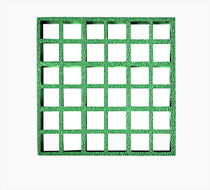loading...
- No. 9, Xingyuan South Street, Dongwaihuan Road, Zaoqiang County, Hengshui, Hebei, China
- admin@zjcomposites.com
- +86 15097380338
- Welcome to visit our website!
frp solar structure
Exploring the Potential of FRP Solar Structures
As the demand for renewable energy continues to grow, innovative materials and structures are playing a crucial role in the optimization and efficiency of solar energy systems. One such innovation is the use of Fiber Reinforced Polymer (FRP) for solar structures. FRP, known for its lightweight, strength, and durability, is emerging as a key player in the development of sustainable solar solutions. This article explores the benefits, applications, and future potential of FRP solar structures.
What is FRP?
Fiber Reinforced Polymer (FRP) is a composite material that consists of a polymer matrix reinforced with fibers, typically glass, carbon, or aramid. This combination results in a material that boasts remarkable tensile strength, resistance to corrosion, and a lower weight compared to traditional building materials like steel and concrete. These characteristics make FRP an attractive option for various applications, particularly in the realm of solar energy.
Advantages of FRP in Solar Structures
1. Lightweight Nature One of the primary advantages of FRP is its lightweight characteristics. This property simplifies transportation and installation processes. In the case of solar panel installations, reducing the weight of mounting structures can lessen the load on rooftops and minimize the need for additional structural reinforcements.
2. Corrosion Resistance Unlike traditional materials, FRP is highly resistant to environmental factors, including moisture, salt, and UV radiation. This resistance enhances the longevity of solar structures, reducing maintenance costs and increasing the lifespan of solar installations. In coastal or harsh environments, FRP can outperform steel and aluminum counterparts.
3. Design Flexibility FRP can be molded into various shapes and sizes, providing architects and engineers with unprecedented design freedom. This adaptability allows for unique solar structure designs that can blend seamlessly with the environment, enhancing aesthetic appeal while maximizing solar energy capture.
4. Sustainability FRP can be manufactured from recycled materials, aligning with the principles of sustainability. The use of green manufacturing practices in producing FRP contributes to the overall reduction of the carbon footprint associated with solar energy systems.
Applications of FRP in the Solar Industry
frp solar structure

FRP is increasingly being integrated into several aspects of solar energy systems.
- Mounting Structures FRP can be used for mounting brackets and supports for solar panels, ensuring a secure yet lightweight base. These structures can be designed to withstand severe weather conditions while minimizing the overall weight.
- Solar Carports and Canopies FRP’s design flexibility makes it an excellent choice for constructing solar carports and canopies. These structures not only generate solar energy but also serve as protective covers for vehicles, showcasing the dual-functionality of FRP in urban environments.
- Solar Tracking Systems Integrating FRP into solar tracking systems can enhance performance. The lightweight nature of FRP allows for quick and precise adjustments in the alignment of solar panels, maximizing energy capture throughout the day.
Future Potential
The future for FRP in solar structures looks promising. As technology advances, the manufacturing processes of FRP are expected to become more efficient, reducing costs and making it accessible for wider applications in solar energy. Research is ongoing to explore hybrid materials that combine the benefits of FRP with other sustainable materials, opening new avenues for innovative designs.
Furthermore, as the global focus shifts toward decarbonization and climate change mitigation, FRP solar structures could be pivotal in achieving sustainable urban development goals. Governments and private sectors are likely to invest more in renewable energy solutions, and the demand for advanced materials like FRP will rise correspondingly.
Conclusion
In summary, Fiber Reinforced Polymer presents numerous advantages that can revolutionize solar energy systems. Its lightweight nature, corrosion resistance, design flexibility, and sustainability make it an ideal material for various solar applications. As the renewable energy sector continues to evolve, the incorporation of FRP in solar structures will likely play a vital role in achieving efficiency, longevity, and aesthetic value, contributing to a more sustainable future. Embracing this material not only propels the solar industry forward but also aligns with global efforts toward environmental stewardship and renewable energy utilization.
-
The Rise of FRP Profiles: Strong, Lightweight, and Built to LastNewsJul.14,2025
-
SMC Panel Tanks: A Modern Water Storage Solution for All EnvironmentsNewsJul.14,2025
-
GRP Grating: A Modern Solution for Safe and Durable Access SystemsNewsJul.14,2025
-
Galvanized Steel Water Tanks: Durable, Reliable, and Ready for UseNewsJul.14,2025
-
FRP Mini Mesh Grating: The Safer, Smarter Flooring SolutionNewsJul.14,2025
-
Exploring FRP Vessels: Durable Solutions for Modern Fluid HandlingNewsJul.14,2025
-
GRP Structures: The Future of Lightweight, High-Performance EngineeringNewsJun.20,2025
